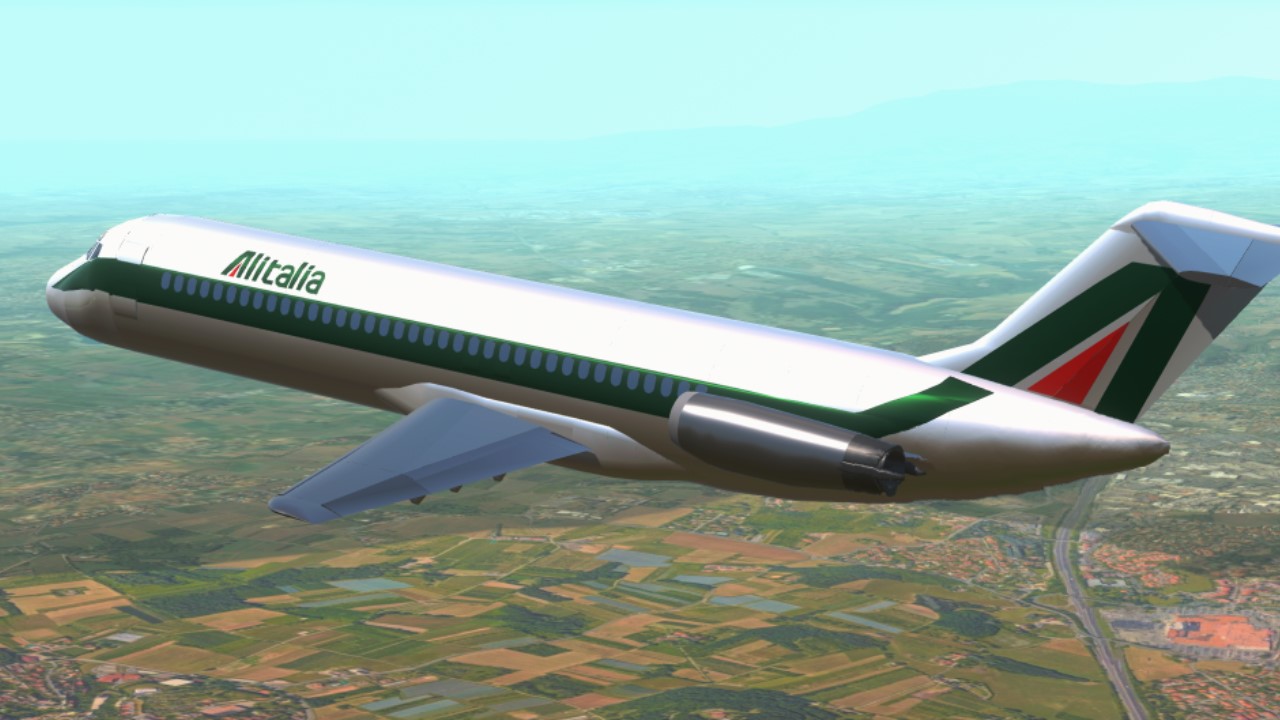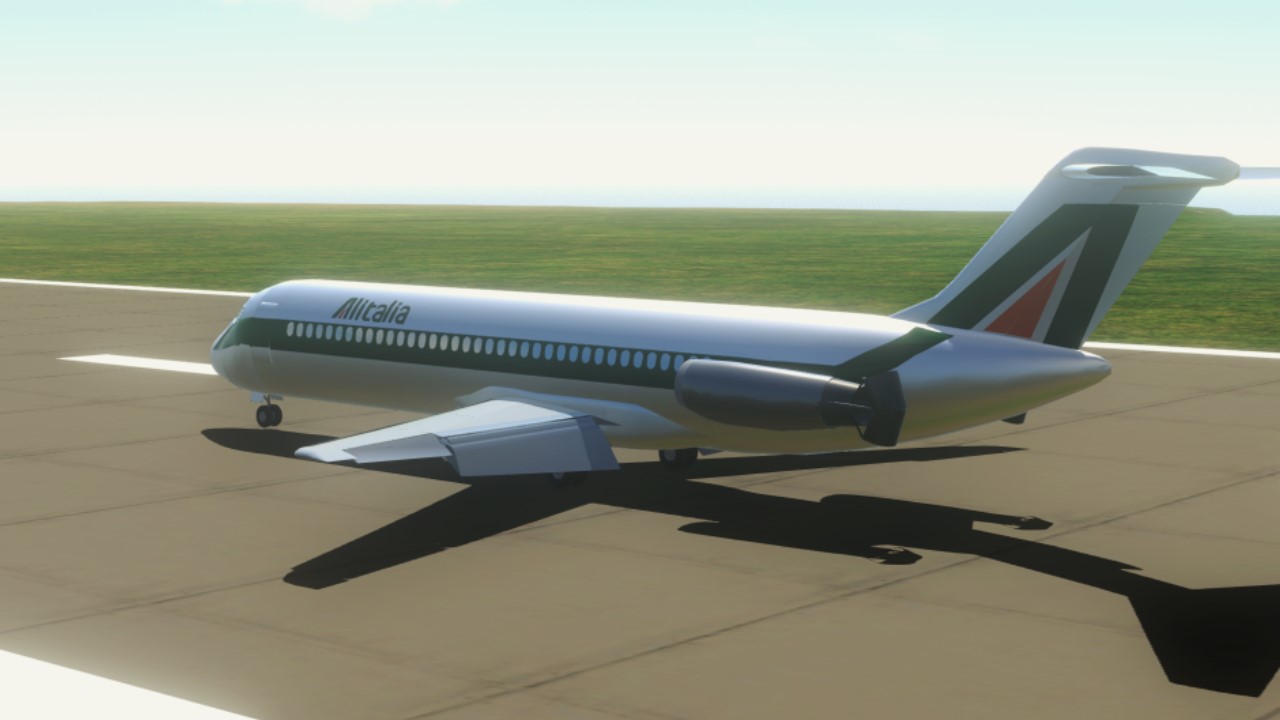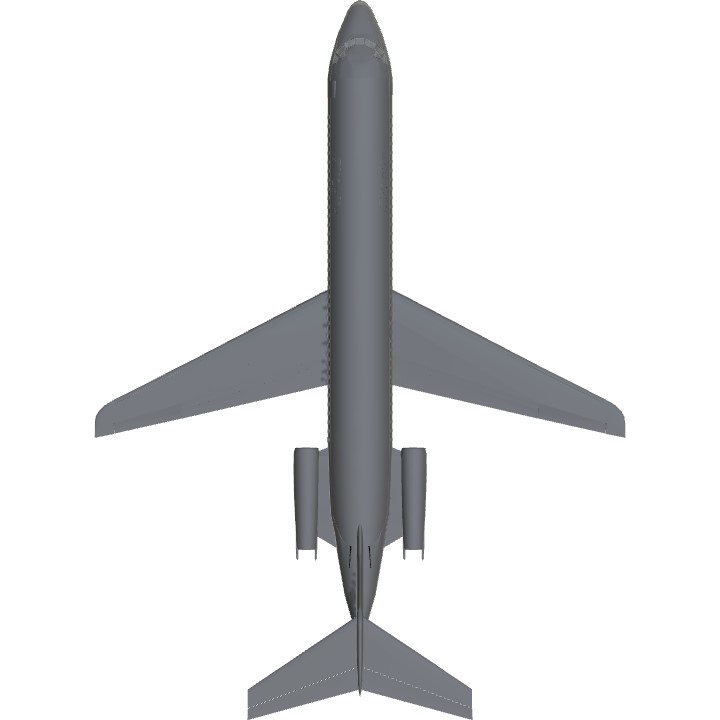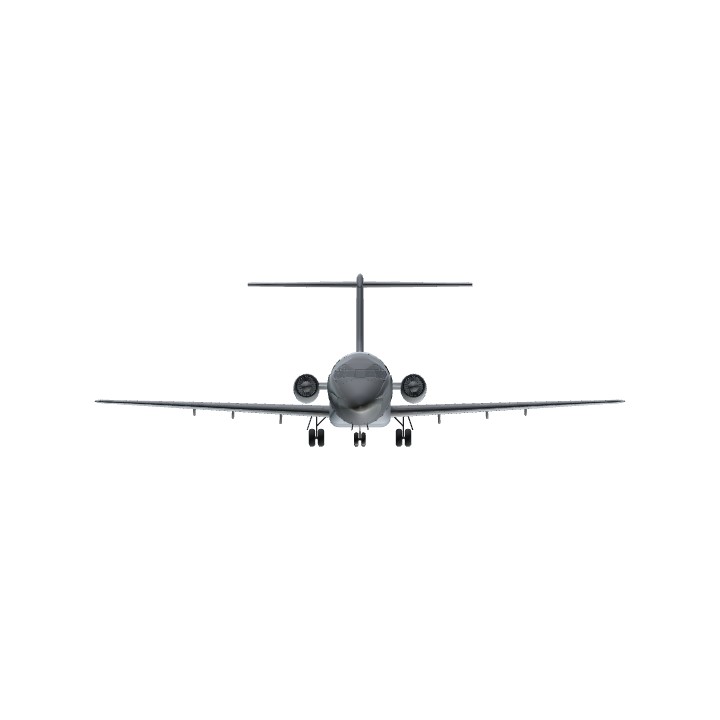DC-9
(From Wikipedia)
The McDonnell Douglas DC-9 (initially the Douglas DC-9) is a single-aisle airliner designed by the Douglas Aircraft Company. After introducing its heavy DC-8 in 1959, Douglas approved the smaller, all-new DC-9 for shorter flights on April 8, 1963. The DC-9-10 first flew on February 25, 1965 and gained its type certificate on November 23, to enter service with Delta Air Lines on December 8. With five seats across in economy, it had two rear-mounted Pratt & Whitney JT8D turbofans under a T-tail for a cleaner wing, a two-person flight deck and built-in airstairs
The Series 10 are 104 ft (32 m) long for typically 90 coach seats. The Series 30, stretched by 15 ft (4.5 m) to seat 115 in economy, has a larger wing and more powerful engines for a higher maximum takeoff weight (MTOW); it first flew in August 1966 and entered service in February 1967. The Series 20 has the Series 10 fuselage, more powerful engines and the -30 improved wings; it first flew in September 1968 and entered service in January 1969. The Series 40 was further lengthened by 6 ft (2 m) for 125 passengers, and the final DC-9-50 series first flew in 1974, stretched again by 8 ft (2.5 m) for 135 passengers. When deliveries ended in October 1982, 976 had been built. Smaller variants competed with the BAC One-Eleven, Fokker F28 and Sud Aviation Caravelle, and larger ones with the original Boeing 737.
The DC-9 was followed by the MD-80 series in 1980, a lengthened DC-9-50 with a larger wing and a higher MTOW. This was further developed into the MD-90 in the early 1990s, as the body was stretched again, with V2500 high-bypass turbofans and an updated flight deck added. The shorter, final version, the MD-95, was renamed the Boeing 717 after McDonnell Douglas's merger with Boeing in 1997, powered by Rolls-Royce BR715 engines
Controls :
Normal
VTOL : Flaps
Trim : Spoilers
AG3 : Reverse Thrust

Credits :
@Ibee for taking screenshots
232287's(numbers man) and Kenneth's Lyon GIS Map
Enjoy!
Specifications
General Characteristics
- Predecessor McDonnell Douglas DC-9-32 Alitalia
- Successors 28 airplane(s) +452 bonus
- Created On Windows
- Wingspan 91.0ft (27.7m)
- Length 123.5ft (37.6m)
- Height 29.7ft (9.1m)
- Empty Weight N/A
- Loaded Weight 44,659lbs (20,257kg)
Performance
- Power/Weight Ratio 5.283
- Wing Loading 28.2lbs/ft2 (137.9kg/m2)
- Wing Area 1,581.0ft2 (146.9m2)
- Drag Points 7288
Parts
- Number of Parts 689
- Control Surfaces 5
- Performance Cost 2,924






Reee pin thi$
Pizza plane
First
nostalgia because i remember using this dc-9 when i first got simpleplanes
I think i made this in roblox once!
noice
TALLIA TALLIA QUESTA E ITALLIA
great job -i think maybe is me next project to make a alitalia replica...
Nice
That 592 Valujet crash...
No
That 404 Alitala Airlines...
Even More No
mcdonalds douglas
Nice
@AnIndonesianGuy ndah lu indonesia sama gue indonesia
What? @AnIndonesianGuy
This is make me remembering alitalia 404
@jokopuryono don't worry, still get permission
E
Bellissimo, grazie!
cool
@AnIndonesianGuy ok ngab
@ACE1089 gw gak ngejual akunnya, apalagi itu akun google yang isinya ada dokumen-dokumen penting
@AnIndonesianGuy boleh buat gw gak akunnya?
@ACE1089 gak, memori hp gak ngedukung
@AnIndonesianGuy Masih main pubg ga ngab?
This the easiest plane to fly, cuz I suck at flying, nice job.